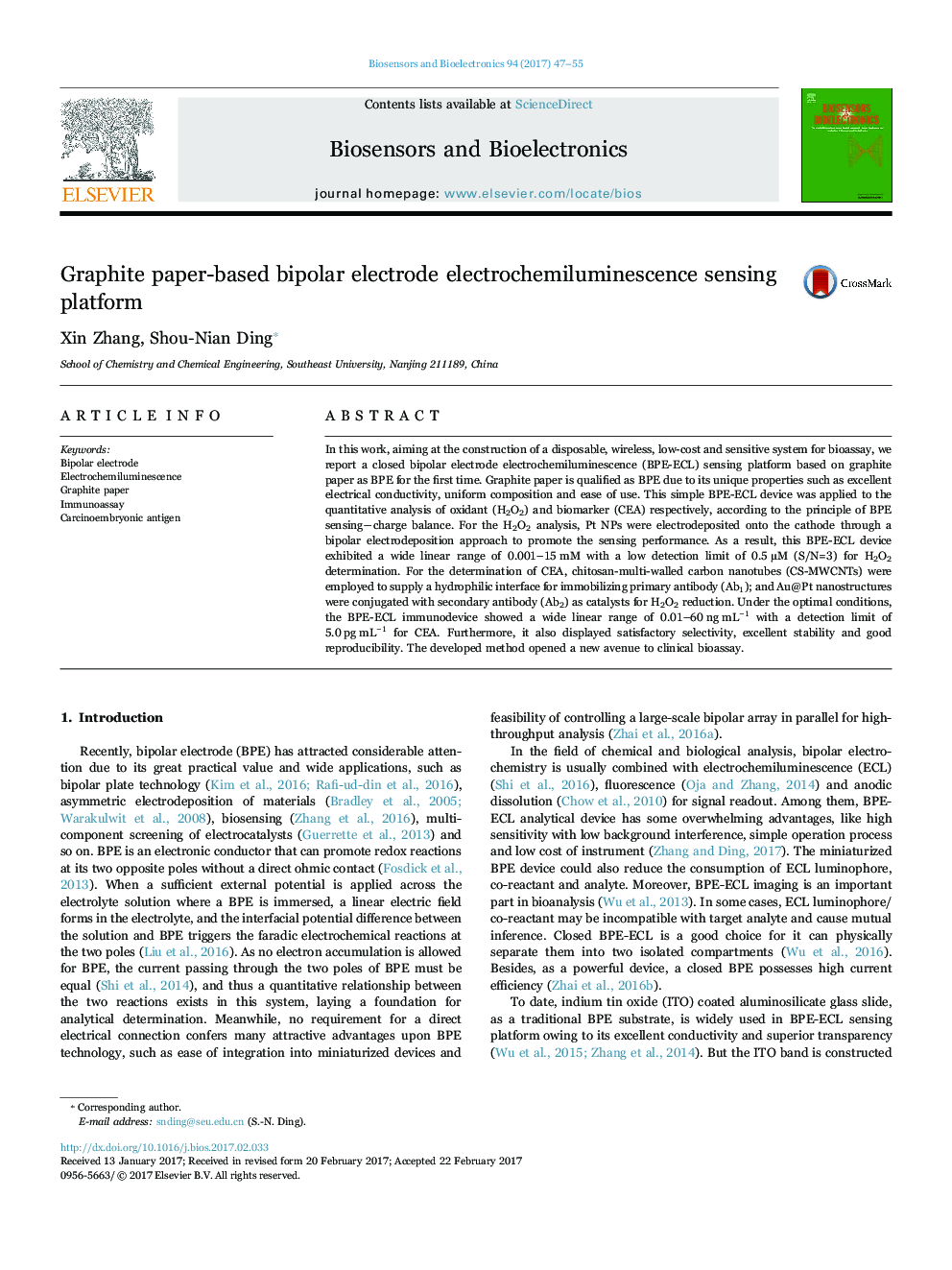| Article ID | Journal | Published Year | Pages | File Type |
|---|---|---|---|---|
| 5031029 | Biosensors and Bioelectronics | 2017 | 9 Pages |
Abstract
In this work, aiming at the construction of a disposable, wireless, low-cost and sensitive system for bioassay, we report a closed bipolar electrode electrochemiluminescence (BPE-ECL) sensing platform based on graphite paper as BPE for the first time. Graphite paper is qualified as BPE due to its unique properties such as excellent electrical conductivity, uniform composition and ease of use. This simple BPE-ECL device was applied to the quantitative analysis of oxidant (H2O2) and biomarker (CEA) respectively, according to the principle of BPE sensingâcharge balance. For the H2O2 analysis, Pt NPs were electrodeposited onto the cathode through a bipolar electrodeposition approach to promote the sensing performance. As a result, this BPE-ECL device exhibited a wide linear range of 0.001-15 mM with a low detection limit of 0.5 µM (S/N=3) for H2O2 determination. For the determination of CEA, chitosan-multi-walled carbon nanotubes (CS-MWCNTs) were employed to supply a hydrophilic interface for immobilizing primary antibody (Ab1); and Au@Pt nanostructures were conjugated with secondary antibody (Ab2) as catalysts for H2O2 reduction. Under the optimal conditions, the BPE-ECL immunodevice showed a wide linear range of 0.01-60 ng mLâ1 with a detection limit of 5.0 pg mLâ1 for CEA. Furthermore, it also displayed satisfactory selectivity, excellent stability and good reproducibility. The developed method opened a new avenue to clinical bioassay.
Related Topics
Physical Sciences and Engineering
Chemistry
Analytical Chemistry
Authors
Xin Zhang, Shou-Nian Ding,
